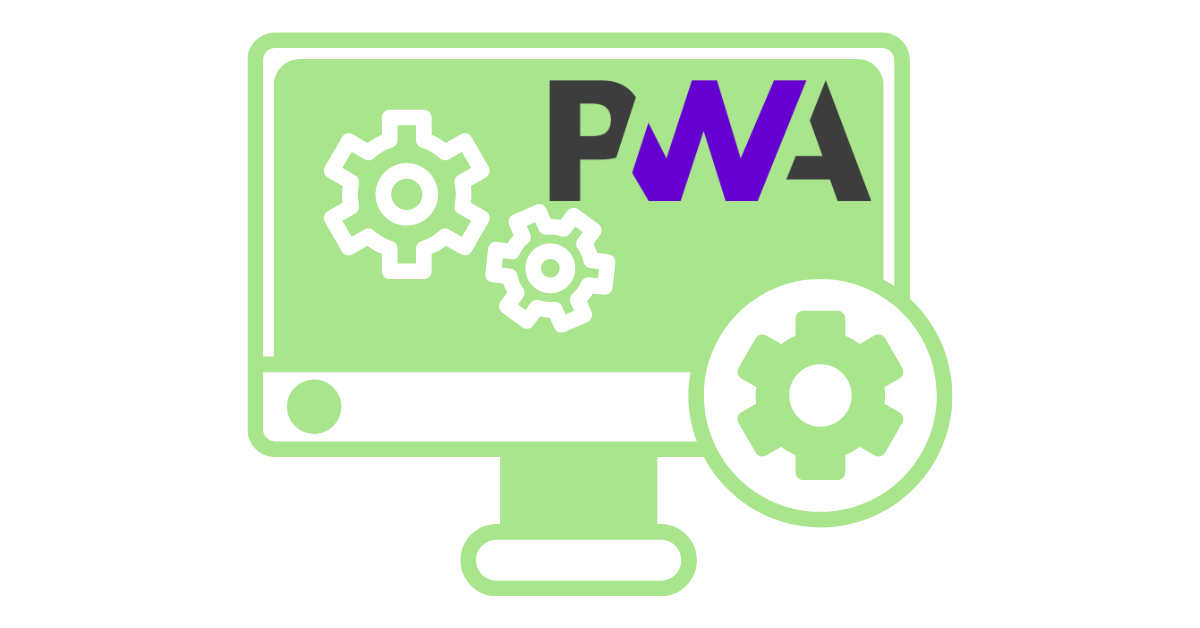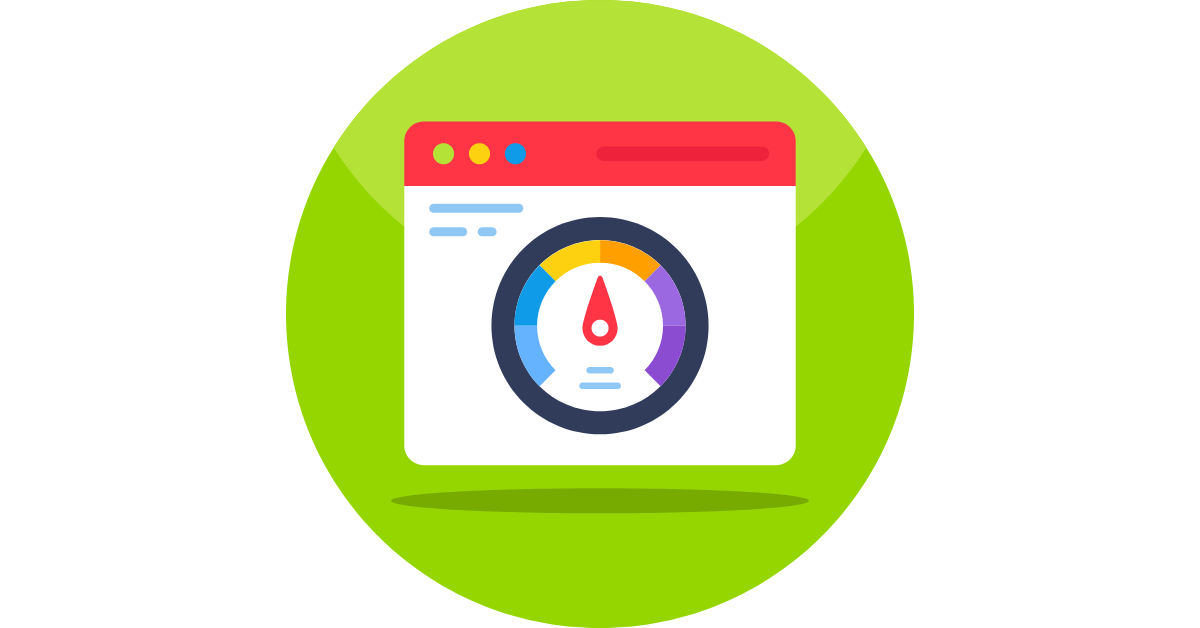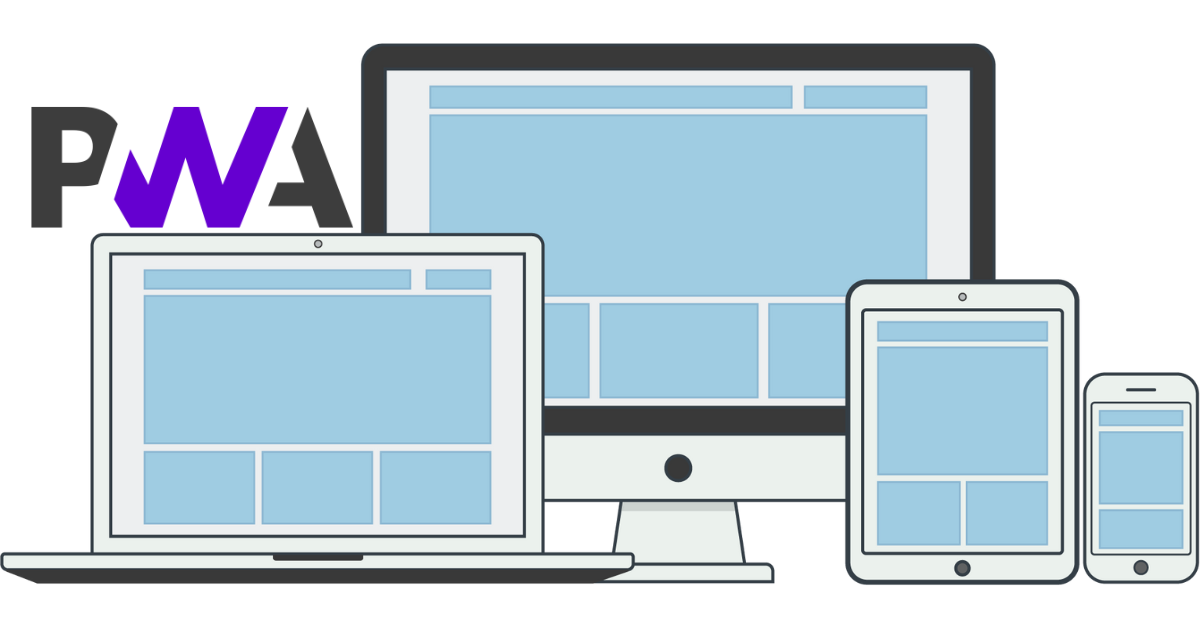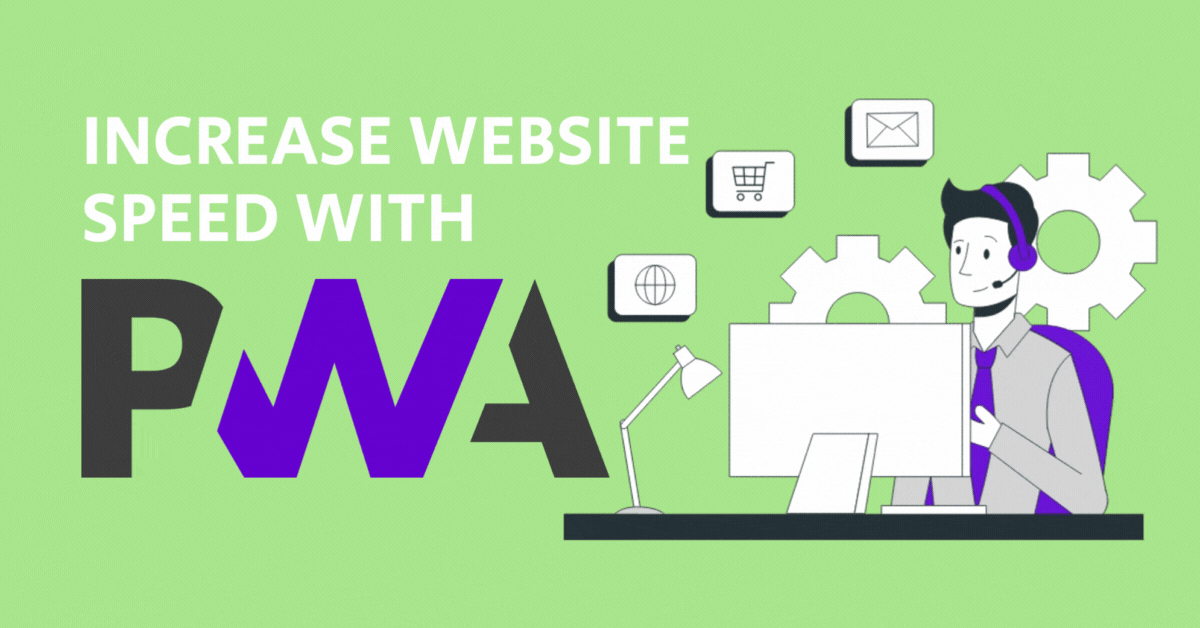When it comes to building future-ready web applications, PWA technology is transforming how users interact with the web. Progressive web apps deliver an app-like experience directly from a web browser, combining the reach of the web with the performance of native applications. In this article, we explore what makes an application ‘progressive,’ the core components of PWA technology, and why it’s becoming a critical tool for developers and businesses looking to enhance user engagement and performance across all platforms.
Key takeaways
- Progressive web apps (PWAs) have gained significant industry adoption as cost-effective, cross-platform web solutions that deliver app-like experiences without the need for specific native applications.
- PWAs are comprised of three essential components for their functionality: service workers for offline capabilities and network request management, HTTPS for secure connections, and the web app manifest file to provide metadata for consistent app behavior across multiple platforms.
- PWAs offer tangible benefits over traditional web apps and native apps in terms of performance, speed, user engagement, and cross-platform compatibility; they present economic and developmental efficiencies by leveraging responsive design and a single codebase for diverse devices.
The rise of PWA technology

In 2007, during the launch of the original iPhone, Steve Jobs first introduced the concept of web applications emulating native apps, commonly referred to as the “appification” of the web. However, it wasn’t until 2015 that Google’s Alex Russell and Frances Berriman officially coined the term ‘Progressive Web Apps’ to describe this innovative approach to web development.
Following this, PWAs have grown exponentially, receiving active support from tech giants such as Google and Microsoft. The shift towards PWAs has been so significant that it’s become a common topic at global conferences, signaling a widespread industry acceptance. Even if originally focused on native iOS app development, now Apple has acknowledged the potential of PWAs and has begun incorporating these technologies into its strategy.
In the present day, due to their capacity to provide app-like experiences across diverse platforms, PWAs are progressively acknowledged as a significant industry standard.
Origins of PWAs
Steve Jobs planted the seeds of PWAs during the iconic 2007 iPhone launch. He envisioned a future where web applications would behave like native apps, integrating seamlessly with the iPhone’s capabilities. This idea of providing rich mobile user experiences through web apps laid the groundwork for future innovations in web technology.
Moving forward to 2015, the term ‘Progressive Web Apps’ was officially coined by Frances Berriman and Alex Russell. This marked a significant milestone in the development of progressive web applications, emphasizing a unified approach to building experiences that bridge the divide between web and native app experiences.
Industry Adoption
Tech giants like Google and Microsoft have thrown their weight behind the progressive web app movement, indicating a strong commitment to the technology’s future. Despite limited cross-browser support for PWAs, especially in Safari, Microsoft has expressed open support for PWAs and plans to implement additional features.
This vigorous support signifies the recognition of PWAs’ immense potential. By utilizing standard web technologies, PWAs are compatible with a wide array of devices, providing a unified user experience across all platforms. This reduces entry barriers for users, allowing businesses to expand their audience reach and significantly enhance user engagement.
Key components of PWAs

Utilizing PWA technology goes beyond a mere web app. It’s a combination of key components that work hand in hand to deliver an app-like experience that’s fast, reliable, and consistent across platforms. These essential components include service workers, HTTPS, and a web app manifest file.
Each of these components is crucial to a PWA’s operation:
- Service workers enable offline functionality and control network requests
- HTTPS ensures a secure connection
- The web app manifest file provides essential metadata about the PWA.
Together, these components make it possible for PWAs to work on all mobile devices, enhancing progressively according to the device’s capabilities.
Service workers
Service workers are central to a PWA’s augmented functionality. These behind-the-scenes workers undergo a specific lifecycle encompassing registration, installation, and activation, each crucial for the PWA’s functioning and control over content. A service worker’s scope, which is defined by the location of its script, determines its ability to control page requests. Ideally, this script is placed at the root of the application for maximum coverage.
But what do service workers actually do? Their primary role is to:
- Enable a PWA to work offline by caching important assets
- Provide consistent performance and offline access even in variable or absent network conditions
- Act as a network proxy, providing granular control over network requests
- Enhance the user experience by enabling fast content delivery and app reliability.
Web app manifest
Another essential component of a PWA is the web app manifest. It’s a JSON file that provides essential metadata about the app, instructing browsers on how to display it and ensuring that it behaves consistently across different platforms. Key properties defined in the web app manifest include:
- name or short_name
- icons
- id
- start_url
- display
- and others.
These properties control aspects such as the app’s name, icon, startup page, and display behavior when launched.
To link the web app manifest to a PWA, it should be placed in the root directory of the application and referenced in the HTML document’s head. The manifest also includes aesthetic properties like theme_color and background_color that specify the colors for UI elements and the splash screen background, enhancing the app’s aesthetic consistency.
The mobile web app manifest is pivotal in helping browsers display the PWA correctly, ensuring the application delivers a consistent and engaging user experience similar to native apps.
HTTPS connection
The final significant component of a PWA is the HTTPS connection. HTTPS is essential in ensuring the protection of user data and website security. It establishes a secure connection that safeguards sensitive interactions between users and websites. By preventing intruders from tampering with these communications or passively listening in, HTTPS maintains user privacy and security.
Beyond security, HTTPS is also necessary for certain browser features to function. New and powerful web platform features, as well as updates to older APIs, are increasingly requiring HTTPS to function, underlining its integral role in the future of the web. Moreover, HTTPS is necessary to gain user permission for sensitive browser features like geolocation or media capture, which browsers restrict from insecure contexts.
Advantages of PWA technology

Having explored what PWAs are and their functioning, we can now investigate the advantages of adopting this technology. PWAs offer a host of advantages over traditional web apps, as well as native apps, making them a promising choice for businesses and developers alike.
PWAs deliver improved speed and performance, with faster load times, impeccable responsiveness, and seamless animations, even under challenging network conditions. They are built with responsive design and can be installed on any device, providing a unified app-like experience across all browsers and systems.
The development of a single PWA offers several advantages over creating separate native mobile apps, including the development of a native mobile app:
- It is more cost-effective
- It offers a feature-rich experience without sacrificing the flexibility and economic benefits of web applications
- It enhances user engagement by leveraging features like web push notifications
- It offers the look and feel of a native app, driving increased user involvement and potentially higher conversion rates.
Performance and speed
Speed and performance are among the most celebrated benefits of PWAs. They significantly reduce page load times, leading to enhanced mobile user experiences. For instance, PWAs have been instrumental in:
- Reducing page load times
- Resulting in a faster interaction time for media and entertainment content
- A reduction in financial services interactions.
PWAs also present a swift user experience, with loading times averaging less than 2 seconds. The implementation of service workers can reduce data retrieval from over 200KB to 13KB and cut down load time from 3.5 seconds to a mere 500 milliseconds. By caching static resources, service workers enhance PWA performance, improve load times, and reduce instances of page abandonment due to slow loading, a key factor in user retention.
Cross-platform compatibility
PWAs offer an unparalleled level of cross-platform compatibility. They are designed to function seamlessly across various devices and operating systems, providing a unified app-like experience without the need for separate native apps. This adaptability is due to PWAs’ use of responsive design, which allows them to adjust to any screen size or orientation.
There are numerous advantages of this cross-platform functionality. For businesses, it means that they can improve their online presence by providing a consistent user experience across all devices without the need for downloading separate apps. For developers, it means maintaining a single codebase while reaching users on multiple platforms, simplifying the development process, and saving both time and resources.
Enhanced user engagement
Arguably, one of the most persuasive benefits of PWAs is their capacity to substantially improve user engagement. Features such as the ability to be added to the home screen, running in full screen, and delivering push notifications all contribute to a more immersive user experience, which can drive increased user involvement and potentially higher conversion rates.
Offline access and push notifications in PWAs have been shown to improve user retention. Push notifications, implemented through the Push API and service workers, engage the audience effectively, leading to increased sales opportunities without relying on traditional advertising.
Moreover, PWAs significantly reduce bounce rates, as demonstrated by pages loading in under 2 seconds, keeping users engaged on the site longer.
PWA vs. native apps

As we probe further into the world of PWAs, a crucial question emerges: how do they stack up against native apps? Both PWAs and native apps have their strengths and weaknesses, and understanding these can help businesses and developers make informed decisions about which technology to adopt.
PWAs are built with capabilities like:
- push notifications
- the ability to work offline
- a mobile-first orientation
- interactivity comparable to native apps.
Developing a PWA can lead to significant savings in time and costs, as it is designed to function across various devices without needing separate versions for each platform like native apps do. However, it’s worth noting that while PWAs have many advantages, they are not expected to replace native apps entirely.
Each serves specific user and business needs, suggesting a continued coexistence where each technology has its place.
Development cost and time
In terms of development cost and time, PWAs hold a clear advantage. Progressive web apps can significantly reduce development costs as there is no need to create separate iOS, Android, or other platform-specific apps. This not only saves time but also makes maintenance and updates more manageable, as they are handled in a single codebase.
Furthermore, PWAs have the following benefits:
- They work on any platform with a compliant browser, eliminating the complexity and additional costs associated with maintaining separate apps for different platforms.
- The smaller size of PWAs, compared to their native app counterparts, benefits users with limited data plans.
- PWAs can enhance user engagement.
Discoverability and SEO
PWAs surpass native apps in another field as well – discoverability and SEO. PWAs can be indexed by search engines similarly to websites, offering improved search result rankings and increased visibility. The mobile-friendliness and faster load times of PWAs enhance their SEO, catering to the prevalence of mobile searches.
At the same time, PWAs can circumvent the need for app store listings by being directly installable via a URL, providing a streamlined path to user engagement. However, it’s worth noting that a potential SEO disadvantage for PWAs is the lack of visibility that would come from being listed in conventional app stores.
Real-world PWA examples and success stories

We often say the proof of the pudding is in the eating, and for PWAs, the results are indeed delightful! A diverse range of industries has harnessed the potential of PWA technology, leading to marked improvements in business outcomes and enhanced user experiences across the spectrum.
Take Rockler for example, a company that specializes in woodworking tools. By converting their mobile site into a PWA, they saw a 63% increase in mobile revenue and a nearly 84% increase in conversions overall. Their PWA provided customers with an app-like experience, which led to these impressive results. The ease of navigation and improved speed encouraged users to explore more products and complete their purchases, a testament to the effectiveness of PWA technology in enhancing online retail experiences.
Satoshi, a cryptocurrency marketplace that embraced PWA technology to streamline its mobile user experience. By doing so, they significantly increased their mobile session length and decreased the bounce rate. Users now enjoy a more reliable and efficient platform, even in areas with poor internet connectivity, thanks to the PWA’s offline capabilities.
Another example is Intel, an industry leader in computing innovation, which has also seen the advantages of adopting PWA technology. By leveraging PWAs, Intel has been able to provide an enhanced user experience that is fast, reliable, and engaging, much like their cutting-edge processors are designed to deliver top performance in computing tasks. This strategic move showcases Intel’s commitment to staying at the forefront of technology and its recognition of the importance of progressive web applications in modern web development.
These are just a few examples of the real-world success stories of companies that have adopted PWA technology, showcasing the tangible benefits and improvements in user engagement and conversion rates. If you are interested in reading more case studies about PWA, check out our PWA blog.
Essential steps and resources for building PWA

Given all the buzz around the wonders of PWAs, you might be considering crafting your own. And why not? Whether you’re a business looking to enhance your online presence or a developer interested in exploring the latest web technologies, building a PWA can be a rewarding venture.
The initial step involves setting up a local web server for your PWA development, to be later deployed on a web server that’s accessible via HTTPS. You’ll then need to develop a web app manifest, a JSON file that contains metadata about your app such as name, description, icons, and start URL. The next crucial step is adding a service worker to your project to enable offline support, caching, background tasks, and other advanced functionalities.
There are several tools and resources available to assist you in this process. You can use:
- AngularJS to build responsive applications with a well-defined method of implementation and strong community support
- Visual Studio Code for editing
- Node.js and the HTTP-server Node.js library to start your local server
- Browser developer tools such as Microsoft Edge DevTools for debugging and testing your PWA
These tools can be invaluable in creating and optimizing your Progressive Web App.
Finally, when your PWA is ready to go live, consider hosting options that provide HTTPS by default, such as Microsoft Azure App Service or GitHub Pages.
There is also the option of engaging a development agency to assist with the creation and implementation of your PWA. This can be particularly beneficial for businesses that may not have the in-house expertise or resources to develop a PWA from scratch. Development agencies can provide valuable insights and experienced professionals who are well-versed in the latest web technologies, ensuring that your PWA is built to the highest standards and optimized for performance and user experience.
Summary
In conclusion, progressive web apps represent a powerful evolution in web technology, bridging the gap between web apps and native mobile apps. With their ability to provide fast, reliable, and engaging user experiences across various platforms, PWAs are poised to become an integral part of the future web landscape. The rise of PWAs is a testament to the continuous innovation in the tech industry, driven by the goal of providing better, more efficient, and more enjoyable user experiences. Whether you’re a business owner, a developer, or a tech enthusiast, now is the perfect time to explore and embrace the world of Progressive Web Apps!
Frequently Asked Questions
What is PWA technology?
A progressive web app, or PWA, is an application developed using web technologies like JavaScript, CSS, and HTML. It functions similarly to a regular web page and can be easily discovered and shared through links.
Which technology is best for PWA?
Ionic is the best technology for building PWAs as it leverages web technologies like HTML, CSS, and JavaScript to create cross-platform PWAs with a native-like user experience.
What are PWA examples?
Here are some impressive examples of progressive web apps that you can explore across various industries: Intel, Buff, Puma, Jaidah Group, Satoshi, Slow Cosmetique, and others.
Is PWA still used today?
Yes, PWAs are still relevant today and provide an enhanced user experience over traditional websites.
How do PWAs compare to native apps?
PWAs offer similar features to native apps, like offline functionality and push notifications, while providing additional benefits such as cost-effectiveness, better discoverability, and cross-platform functionality. This makes them a compelling choice for many businesses.
Curious to see the power of PWA technology on your website? Get in touch with us, and together, we’ll take your online store to new levels of success!


Share on: